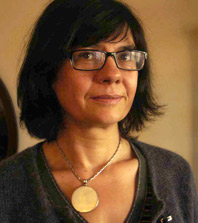 On the first of April (yes, really) I’ll be giving a paper at the Deakin University Philosophy seminar series entitled ‘Catherine Malabou and Synaptic Personhood’. The paper argues that the way Malabou seeks to understand the relation between brain and mind as an instance of explosive plasticity, cutting across the dichotomy of reductionism and anti-reductionism, risks running aground on the rocks of her engagement with Joseph LeDoux and Antonio Damasio. The paper isn’t complete yet but my working hypothesis, of which I am increasingly convinced, is that Malabou does, despite her best efforts and despite protestations to the contrary, slip into a sophisticated form of homunculism.
On the first of April (yes, really) I’ll be giving a paper at the Deakin University Philosophy seminar series entitled ‘Catherine Malabou and Synaptic Personhood’. The paper argues that the way Malabou seeks to understand the relation between brain and mind as an instance of explosive plasticity, cutting across the dichotomy of reductionism and anti-reductionism, risks running aground on the rocks of her engagement with Joseph LeDoux and Antonio Damasio. The paper isn’t complete yet but my working hypothesis, of which I am increasingly convinced, is that Malabou does, despite her best efforts and despite protestations to the contrary, slip into a sophisticated form of homunculism.
 The paper comes out of the book project The Human Remains, in which I discuss Malabou’s account of selfhood and personhood in her reading of Damasio and LeDoux, and also in her experience of nursing her grandmother through Alzheimer’s and her understanding of the case of Phineas Gage. In the book, the discussion is set in the broader context of different understandings of the imago dei; for the Deakin paper I think I’ll set it in the context of gun ownership laws in the U.S.A. (there is a link).
The paper comes out of the book project The Human Remains, in which I discuss Malabou’s account of selfhood and personhood in her reading of Damasio and LeDoux, and also in her experience of nursing her grandmother through Alzheimer’s and her understanding of the case of Phineas Gage. In the book, the discussion is set in the broader context of different understandings of the imago dei; for the Deakin paper I think I’ll set it in the context of gun ownership laws in the U.S.A. (there is a link).
The title is a wager. Joseph LeDoux evokes the ‘synaptic self’ but I am going to argue that there is a slippage between selfhood, personhood and subjectivity in Malabou’s reading of LeDoux and Damasio.
![]()